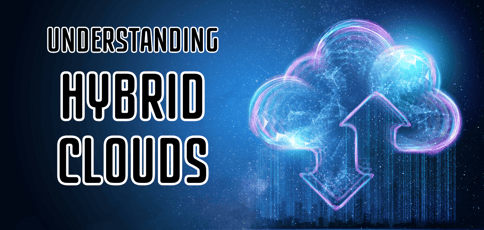
Normally, we use the word “hybrid” to describe a combination of two things. In the context of cloud computing, a hybrid cloud is what you get when you combine both public and private cloud infrastructures.
So, why combine these two in the first place? How does it work, and what are the benefits? This guide answers these and many other questions about hybrid clouds.
-
Navigate This Article:
The Hybrid Cloud: Core Concepts
Let’s begin with the “why” of hybrid cloud environments. A hybrid cloud combines on-premises private cloud and third-party public cloud services.
These two work in tandem to create a unified, flexible, and efficient computing environment that can adjust to changing business needs.
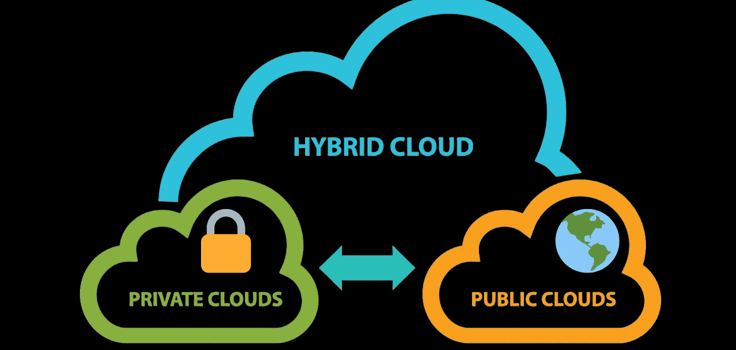
The purpose of blending private and public clouds is to allow businesses to keep data and workloads in their best possible environments.
For example, sensitive data and critical workloads are better off living on a private cloud (due to stability and security reasons). On the other hand, the public cloud best suits less sensitive operations and situations with fluctuating workloads.
Putting some workload in the private cloud and some in the public cloud allows organizations to save money and secure their most important assets.
How Hybrid Clouds Work
Now, let’s briefly talk about the “how” of hybrid cloud computing. This setup connects a public and private cloud environment via a network (or a series of networks), where data and applications can move between them as needed.
As a result, it allows businesses to take advantage of the best features of both cloud types: scalability, cost savings, and control.
Architecture Overview
As you’d expect, hybrid cloud systems have several components beyond the public and private cloud. Here, you’ll find the tools needed to integrate and manage the private cloud.
For instance, tools like VMware vRealize Suite help with cloud management, while Red Hat OpenShift handles container orchestration. The architecture is designed to ensure that data and applications can move seamlessly between private and public clouds.
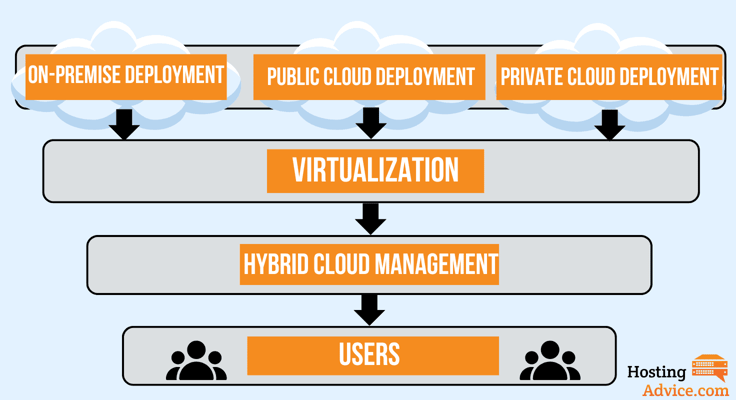
It’s like a car’s engine; it has many different parts and components that work together to create a cohesive system and achieve a common goal.
Public Cloud
Public clouds are services offered by third-party providers over the internet. These cloud resources are available to anyone who wants to use or purchase them.
The most common examples of public cloud providers include:
- Amazon Web Services (biggest by market share)
- Microsoft Azure
- Google Cloud Platform
Most businesses opt for public clouds because of their ability to quickly scale resources up or down almost instantly. And because they offer a pay-as-you-go pricing model, businesses don’t need to break the bank to secure a spot in the public cloud.
Private Cloud
A private cloud is used exclusively by one organization and hosted on-premises or by a third-party provider.
This option works best if you’re looking for greater control, better cloud security, and customization of your cloud environment. That’s why it is mostly preferred by industries that handle sensitive or critical workloads.
Banking, government, healthcare, and finance are good examples of such industries.
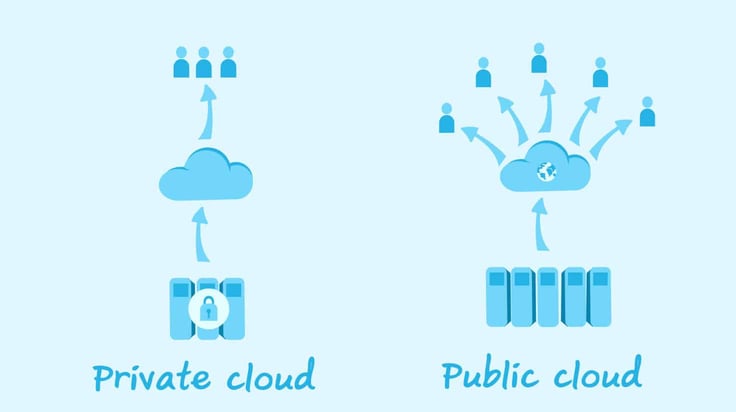
Because they are designed to meet specific business needs, private cloud environments provide tailored solutions that ensure compliance with industry regulations (such as HIPAA for the healthcare industry and PCI for eCommerce) and internal policies.
Needless to say, because businesses don’t share their private cloud with other users, this setup delivers high performance and reliability.
Hybrid Integration
We started by explaining that a hybrid environment arises when we combine a public and private cloud using orchestration and management tools. These tools ensure that the different environments work together to allow the exchange of data and applications between them.
APIs, middleware, and cloud management platforms are just some of the many different technologies used to integrate these two environments. We’ll discuss these technologies in more detail shortly.
Hybrid Cloud vs. Multicloud: What’s the Difference?
When learning about cloud environments, multicloud is another common principle you’ll come across. So far, we’ve learned that a hybrid cloud integrates public and private cloud environments, allowing them to work together as a unified system.
In contrast, multicloud refers to multiple cloud services from different providers without necessarily integrating them. Simply put, hybrid clouds are all about integration (public and private clouds).
Multicloud, on the other hand, means using more than one cloud provider to diversify your infrastructure. That’s the key difference between hybrid cloud and multicloud.
Key Technologies
Now, let’s dive a little deeper into the key technologies that enable hybrid clouds to function. To be more specific, these technologies make things like data transfer, communication, and management across different cloud platforms possible.
APIs and Middleware
Application programming interfaces (APIs) and middleware are usually in charge of communication and data transfer between different cloud environments.
APIs help software components to interact with each other and achieve seamless connectivity between public and private clouds. Middleware acts as a bridge by providing the necessary tools and services to integrate and manage these interactions.
Cloud Management Platforms (CMPs)
CMPs are tools that help manage and monitor hybrid cloud environments. They usually have a user interface where you can oversee resources, applications, and services across both public and private clouds.
CMPs, like VMware vRealize Suite, Red Hat OpenShift, and Microsoft Azure Arc, have different features, such as automation, orchestration, and analytics, that help businesses optimize their cloud operations.
Benefits
Hybrid clouds combine the benefits of both public and private cloud environments. Here’s a closer look at these benefits:
Scalability and Flexibility
Since hybrid clouds provide dynamic resource allocation, businesses can scale resources up or down based on demand.
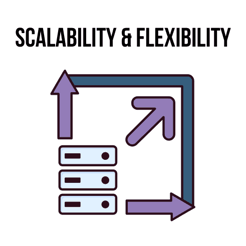
Here’s how: Hybrid clouds utilize both private and public cloud resources, providing virtually unlimited resources for handling peak loads or expanding services.
They can also automatically deploy applications based on performance or regulatory needs.
This flexibility is particularly important when you want your IT infrastructure to adapt to changing business needs.
During periods of high demand, for example, businesses can leverage the public cloud to quickly add capacity. Then, when demand decreases, they can scale back.
Cost Efficiency
Hybrid clouds help businesses optimize costs by balancing the use of public and private resources.
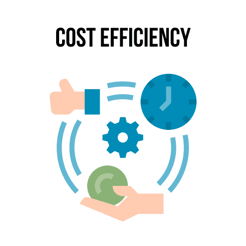
“Cloud is cheaper when compared to building an entire infrastructure on-premise, especially when you need to scale for more resources,” wrote global IT service provider, phoenixNAP.
As we saw earlier, public clouds can handle non-sensitive workloads as private clouds handle sensitive data.
This approach minimizes waste and maximizes value because there’s no need for hefty upfront infrastructure investments.
Enhanced Security and Compliance
Hybrid cloud is highly recommended if you want to achieve maximum security at an affordable cost.
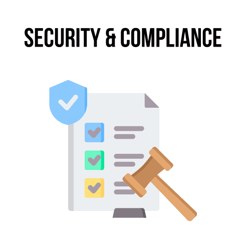
For instance, you keep sensitive data on private clouds for security and compliance reasons.
At the same time, less sensitive data goes to public clouds and benefits from the scalability and cost benefits of living in such an environment.
One survey by Network World shows that around 60% of people believe the cloud (particularly the hybrid cloud) is a more secure way to host apps and data than on-site data centers.
Business Continuity and Disaster Recovery
The hybrid option is ideal if you’re looking for resilience and data protection.
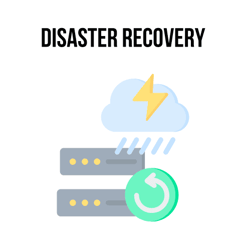
That’s because it backs up data regularly and offers quick recovery solutions when there is a technical problem.
This setup can keep your business up and running even when disaster strikes, especially since hybrid clouds can enable backups both on- and off-site.
And since hybrid clouds give businesses the flexibility to choose where to deploy applications, it’s easier to keep sensitive data safe in a private cloud (or on-premises).
Use Cases
Hybrid clouds are versatile, meaning you can use them in many different scenarios to meet specific business needs. Let’s explore a few examples below.
Data Analytics
Today’s world is data-driven. Businesses are relying on data to make informed decisions now more than ever. The same applies to investors — they rely on data to make important decisions about their investments.
Interestingly, a Gartner study found that cloud computing is the most preferred technology for companies investing in data analytics.
Of 62 technology companies interviewed, 48% said they preferred cloud computing as their key data analytics investment area.
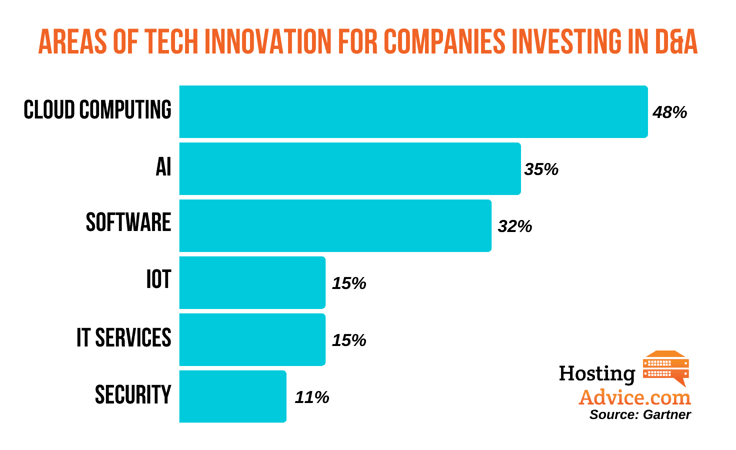
Of course, each organization has its own reasons for opting for the cloud. Still, one thing that’s certain is that in a hybrid cloud environment, the public cloud can handle high-performance computing and data analytics as sensitive data stays in the private cloud.
This setup allows organizations to analyze large datasets and gain insights without compromising data security.
Also, by using public cloud resources for intensive computational tasks, businesses can scale their analytics capabilities and improve decision-making processes.
Development and Testing
Businesses can also use hybrid clouds for development and testing environments. This actually speeds up the software development lifecycle because different processes run in various environments.
For instance, developers can use public cloud resources to quickly set up and tear down test environments.
But that doesn’t mean the private cloud won’t have a role to play; on the contrary, it can house sensitive code and data for security and compliance reasons.
Seasonal Workloads
Earlier, we mentioned that hybrid clouds allow businesses to scale resources up or down based on demand. This trait makes the hybrid cloud an excellent choice for handling seasonal workloads.
Think of the retail industry as an example. Most businesses get busier during peak shopping seasons, such as Christmas or Black Friday, and then scale back during slower periods. When things get busy, you need an environment that can accommodate the increased demand. That’s where a hybrid cloud comes in.
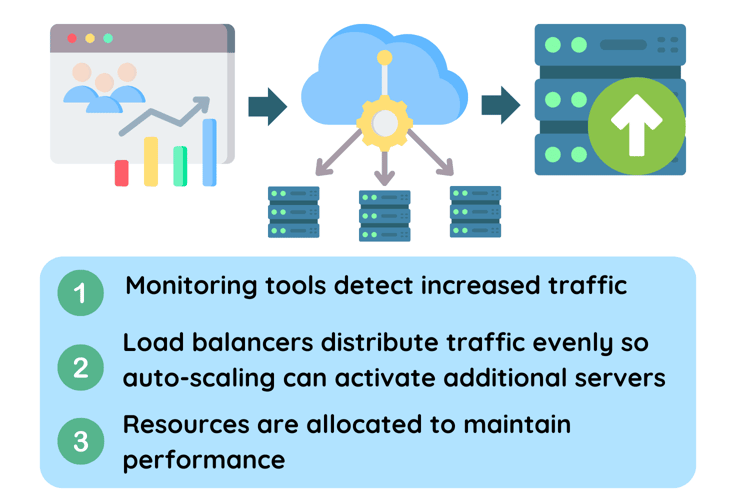
Perhaps the biggest advantage of this flexibility is that it helps businesses manage costs and maintain performance during high demand. By leveraging the public cloud for temporary resource needs, businesses can avoid spending too much money on infrastructure they’ll only need for a specific period of time.
Regulated Industries
Certain industries like finance, government, and healthcare have strict compliance requirements. Most of these requirements revolve around security and privacy — two qualities that best define a hybrid cloud environment.
By now, you should have a rough understanding of what happens in these two environments. Sensitive data lives in the private cloud for compliance and security reasons, while less-sensitive data lives in a public cloud environment.
As a result, regulated organizations can adopt cloud technologies without compromising security or violating important industry-specific laws such as PCI and HIPAA.
Challenges and Considerations
While a hybrid cloud offers many benefits, it also comes with challenges worth paying attention to. That’s the only way to understand, successfully implement, and manage such an environment.
Management Complexity
Managing a hybrid cloud comes with challenges. For starters, you’ll need careful planning and the right tools to execute your plan.
If you’re running a business, you should find a way to coordinate between public and private clouds and manage resources, applications, and data across both environments.
Achieving these goals comes with higher administrative overhead and potential operational challenges.
Security Risks
Safely transferring and managing data across different cloud environments isn’t always a walk in the park. Businesses must implement tight security measures to protect sensitive information in transit and storage.
Examples of such security measures include encryption, access controls, and secure communication protocols.
Additionally, routine monitoring of hybrid cloud environments for potential vulnerabilities and threats goes a long way toward safeguarding data and maintaining compliance with industry regulations.
Cost Management
We talked about how a hybrid cloud can save costs compared to a private infrastructure. But it’s more expensive than using a public cloud.
To manage and avoid unexpected costs, you should monitor and optimize expenses in the hybrid cloud environment.
Expense optimization involves analyzing cost data, identifying areas of inefficiency, and making informed decisions about resource allocation.
Vendor Lock-In
You shouldn’t depend on a single cloud provider; you’re better off keeping your options open to maintain flexibility and negotiate better terms.
In fact, consider diversifying your cloud strategy rather than putting all your eggs in one basket. Diversification reduces the impact of vendor-specific limitations and also ensures you have access to the best services available.
Speaking of vendor-specific limitations, think of Microsoft Azure Arc as an example. It’s a powerful hybrid and multicloud management tool. However, it may not integrate seamlessly with non-Microsoft environments.
So, if you need to move your cloud environment elsewhere, it’ll be costly and inconvenient.
Best Practices for Implementation
Implementing a hybrid cloud environment isn’t just a matter of combining a private and public cloud environment and watching the magic happen; you need a plan.
The following are best practices to achieve your hybrid cloud goals and overcome potential challenges.
Strategic Planning
Let’s begin with the plan we mentioned earlier. You should assess your business needs and define a hybrid cloud strategy that’s aligned with your goals.

Factors like security, compliance, and resource requirements are a great place to start when trying to figure out your business needs.
Once you have defined your goals, you should develop a clear road map that outlines the steps needed to implement and manage your hybrid cloud environment.
This strategic planning phase should involve key stakeholders and consider the long-term impact of the hybrid cloud on your business operations.
Choosing a Cloud Provider
The truth is that not every hybrid cloud hosting provider will suit your project and goals.
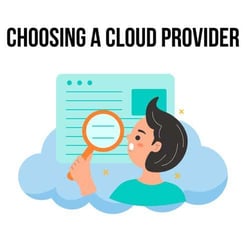
Some are, quite frankly, subpar.
To find a suitable solution, compare the top hybrid cloud providers based on factors such as performance, security, and cost.
Look for providers that offer the strongest support and integration capabilities. Consider the specific features and services each provider offers and how they align with your business needs.
Choosing the Right Tools
You’ve seen how important cloud management tools are in a hybrid cloud environment.
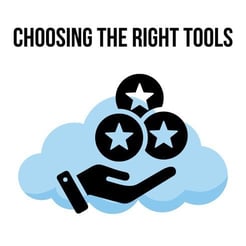
We’ve discussed different platforms, APIs, and middleware.
You’ll need the right tools for seamless integration and operation of your hybrid cloud environment.
Make sure you evaluate different options based on their features, ease of use, and compatibility with your existing cloud infrastructure.
The right tools can simplify hybrid cloud management and provide outstanding performance.
Data Governance
You need robust data management and security policies to protect sensitive information and ensure compliance with industry regulations.
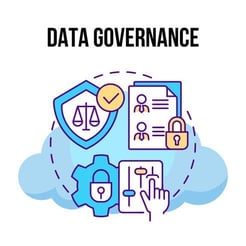
This includes but is not limited to establishing clear guidelines for data storage, access, and transfer between cloud environments.
Also, ensure you regularly review and update your data governance policies to address emerging threats and regulation changes.
With effective data governance, you’ll be able to maintain the integrity and security of your hybrid cloud environment.
Performance Monitoring
The job doesn’t end with setting up a hybrid cloud environment.
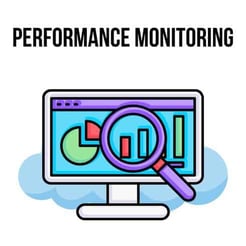
Even after setting it up, you should continuously monitor and optimize its performance to make sure it operates as it should. That way, you can address any issues promptly.
Performance monitoring tools like Datadog, New Relic, Splunk, or Prometheus can help you track resource usage, identify bottlenecks, and make necessary adjustments.
Proactive performance monitoring is a great way to ensure that your hybrid cloud environment remains reliable and efficient.
Training and Skill Development
If you have an IT team, you should have it equipped with the necessary skills and knowledge to manage and operate a hybrid cloud environment effectively.

For best results, consider providing ongoing training and development opportunities to keep your team updated on the latest technologies and best practices in this field.
You should also encourage collaboration and knowledge sharing within your team to build a strong foundation of expertise in hybrid cloud environments.
Investing in knowledge and skill development is a sure bet since you’ll have a team that understands how to work with current technologies while adjusting to future changes.
Outlook of the Hybrid Cloud Model
To sum it all up, hybrid clouds will become even more important to business operations in the foreseeable future, especially now that we’re witnessing rapid inventions in artificial intelligence and machine learning.
Why hybrid cloud? It all boils down to four key qualities any cloud-based business needs: flexibility, security, scalability, and efficiency.
We’re also seeing a trend where businesses increasingly rely on data-driven decision-making. For perspective, one study found that about 90% of enterprise analytics and business professionals say data and analytics inform their organization’s digital transformation projects.
When all is said and done, organizations can create a computing environment that supports their growth and innovation by leveraging the strengths of both public and private clouds.
As the hybrid cloud landscape continues to evolve, businesses that embrace this model will be well-positioned to thrive in the digital age.







